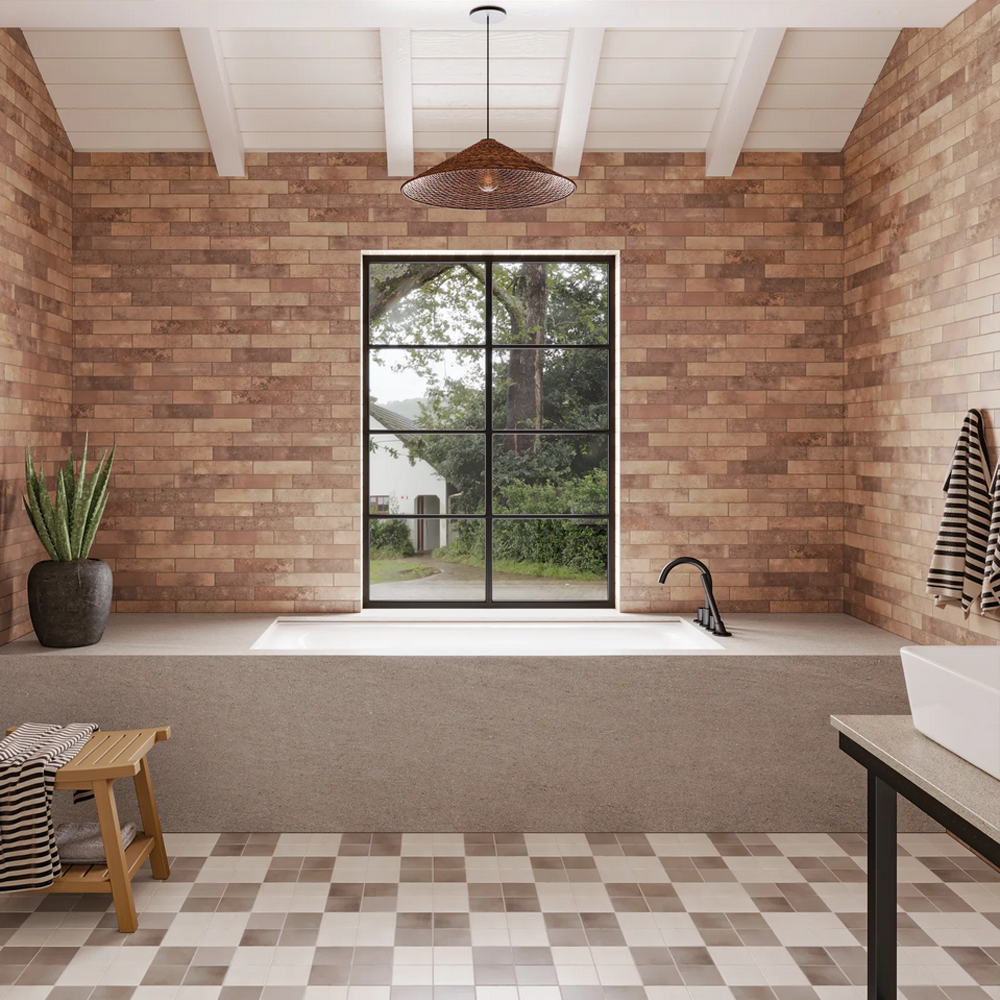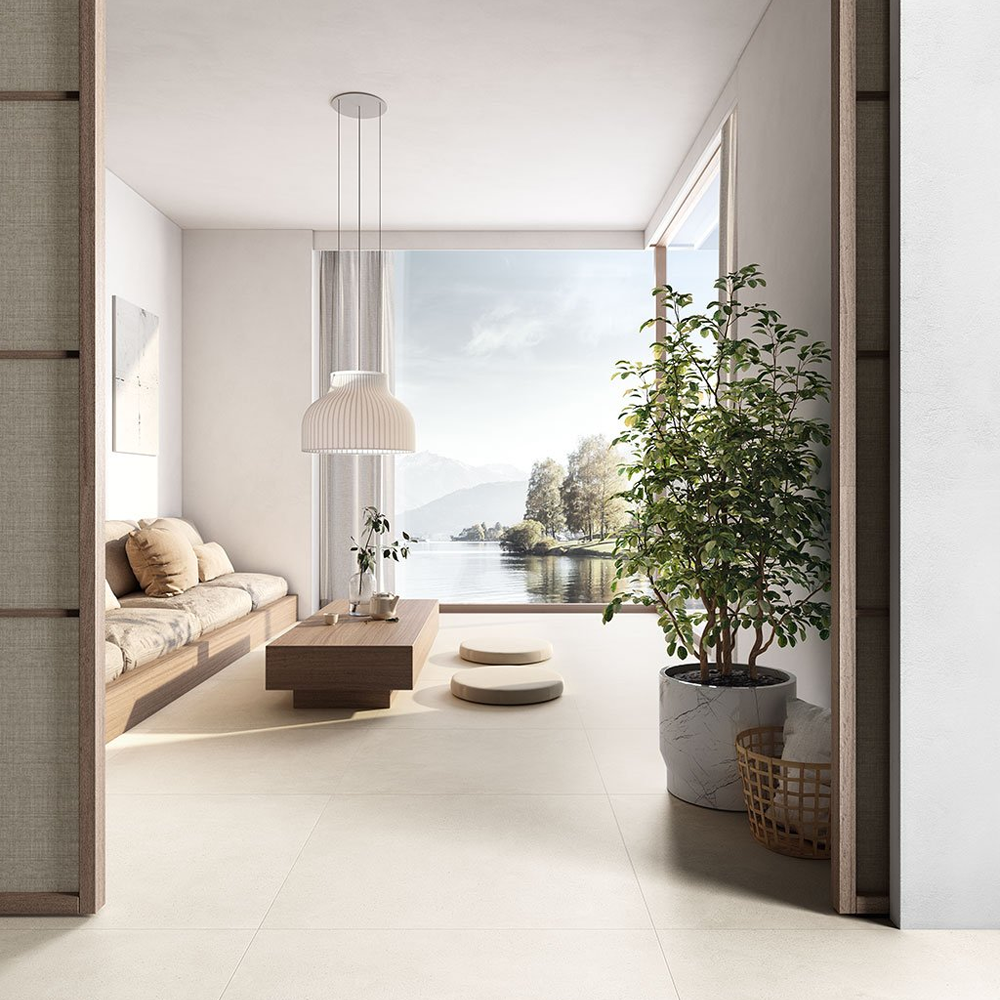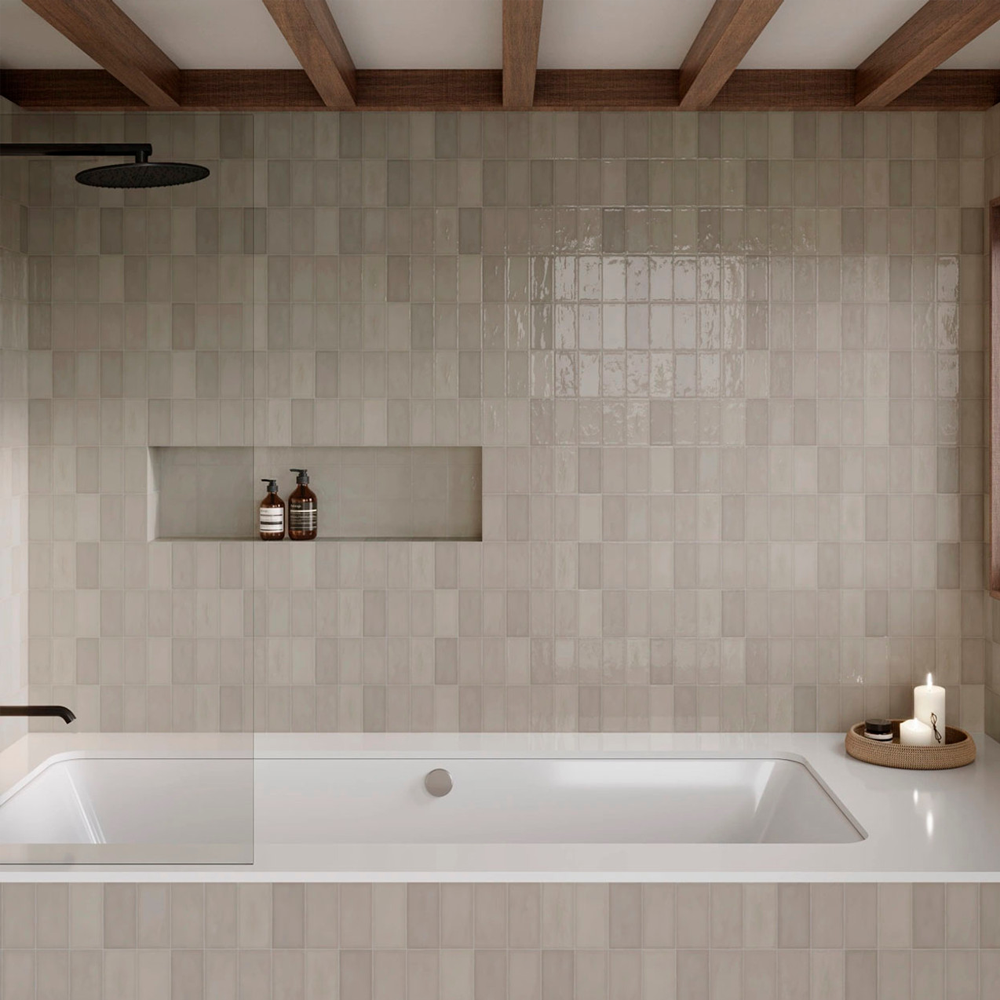How to Choose the Perfect Tile Size
Tile Size Guide
Selecting the right tile size can greatly impact the look and feel of a space. Whether you’re tiling a bathroom, kitchen, or living area, the size of the tile plays a crucial role in balancing aesthetics and functionality.
Does Room Size Matter For Tile?
The size of the room is one of the most important factors when choosing tile size, as it directly impacts how spacious or cramped the area feels. Here’s a closer look at how to approach tile size based on room dimensions:
- Small Rooms: In tight spaces like small bathrooms, powder rooms, or laundry areas, using smaller tiles (like 12"x12", 6"x6", or mosaic tiles) tends to work best. The smaller tile size creates a sense of proportion, avoiding overwhelming the room. It also allows for more intricate patterns, adding personality and interest to otherwise compact areas. Smaller tiles make it easier to contour the tile layout to awkward corners or fixtures, minimizing the need for excessive cutting. Additionally, smaller tiles help create the illusion of more texture and detail, which can make a small room feel more complete. However, small tiles mean more grout lines, which may require more maintenance over time.
- Medium-Sized Rooms: In spaces like medium-sized bathrooms or standard kitchens, a balanced approach can be beneficial. Tiles in the 12"x24" or 18"x18" range can strike the right chord, offering enough surface area to reduce the appearance of too many grout lines while maintaining harmony with the room’s scale. This size works well when you want to balance spaciousness and detail, creating a clean look without overwhelming the design.
- Large Rooms: For large rooms, such as living rooms, open-plan kitchens, or large bathrooms, opting for large-format tiles (18"x18", 24"x24", or even larger like 24"x48") can significantly enhance the sense of openness. Large tiles minimize the appearance of grout lines, which can make the room feel more seamless and less cluttered. This is particularly effective in modern, minimalist designs where the goal is to create a sleek, expansive atmosphere.
In summary, the key is to match the tile size with the room’s dimensions to maintain a good visual balance. While large tiles create a sense of openness in big spaces, smaller tiles keep small rooms feeling cozy without being overwhelmed.
What's the best placement for different tile sizes?
The placement of the tile—whether on walls or floors—should guide your choice of size, as it affects both the visual appeal and the practicality of the space.
- Walls: Smaller tiles, like subway tiles (typically 3"x6") or mosaics, are well-suited for walls because they offer a delicate, polished look. Their smaller size allows for intricate patterns, such as herringbone or stacked layouts, which add interest and sophistication without overwhelming vertical spaces. This is especially effective in areas like kitchen backsplashes, shower walls, or feature walls, where the goal is to create a stylish focal point. The smaller scale of these tiles also makes it easier to work around outlets, faucets, or corners, ensuring a clean, precise finish. Browse our wall tile
- Floors: Larger tiles (such as 12"x24", 18"x18", or larger) are usually the better option. Fewer grout lines create a more seamless and unified look, which can make a room feel bigger and less cluttered. This is especially important in larger areas like living rooms, hallways, or open-plan kitchens, where a continuous flow of large tiles enhances the sense of spaciousness. Additionaly, fewer grout lines mean less maintenance over time, as grout can be prone to staining and wear in high-traffic areas. Large tiles are also ideal for spaces where ease of cleaning is a priority, such as bathrooms or entryways, because the smoother surface with minimal grout lines reduces the buildup of dirt and moisture. Browse our floor tile
By aligning tile size with where you're installing it, you can optimize both aesthetics and functionality—smaller tiles add intricate detail to walls, while larger tiles enhance openness and ease of maintenance on floors.
How Tile Size Affects Room Design, Furniture, and Fixtures
When choosing tile size, it`s essential to consider how the tiles will interact with the furniture, fixtures, and other decorative elements in the room. Achieving the right balance helps to create a cohesive and visually pleasing space.
-
Large Tiles: While large tiles (such as 24"x24" or 12"x24") can create a sleek, spacious look, they may overpower a room filled with a lot of furniture, fixtures, or intricate design elements. For example, in a bathroom with many built-in features like a freestanding tub, a detailed vanity, or multiple decorative fixtures, large tiles might draw too much attention and clash with these elements, making the space feel crowded. In kitchens or dining areas with ornate cabinetry, large tiles can detract from the detailing by competing for visual dominance. The key is to ensure that the large tiles don`t overshadow the furniture or create a feeling of imbalance.
-
Smaller Tiles: On the other hand, smaller tiles (such as 12"x12", mosaic, or subway tiles) work well in spaces with a lot of detailed furniture or fixtures. They complement busy rooms by adding texture and intricacy without overwhelming the space. For example, in a kitchen with detailed cabinetry or a bathroom with an ornate vanity, smaller tiles can subtly enhance the overall design by providing a balanced backdrop that doesn`t compete for attention. Smaller tiles also allow for more complex patterns, like mosaics or herringbone, which can complement the fine details of the room`s decor.
In spaces with lots of fixtures or design elements, smaller tiles help maintain visual harmony by creating a textured, intricate look that enhances, rather than competes with, the other features.
However, in minimalist spaces where the goal is to achieve a clean, open feel—such as a modern living room with simple, streamlined furniture—large tiles can enhance the sense of space by reducing visual clutter and letting the few pieces of furniture stand out.
In summary, tile size should complement the rooms furniture and fixtures. Large tiles are ideal for open, minimalist spaces but can overwhelm rooms with detailed decor, while smaller tiles work well in rooms with many features, providing balance and enhancing the overall design.
For help designing your space, come visit us at any of our showrooms.










